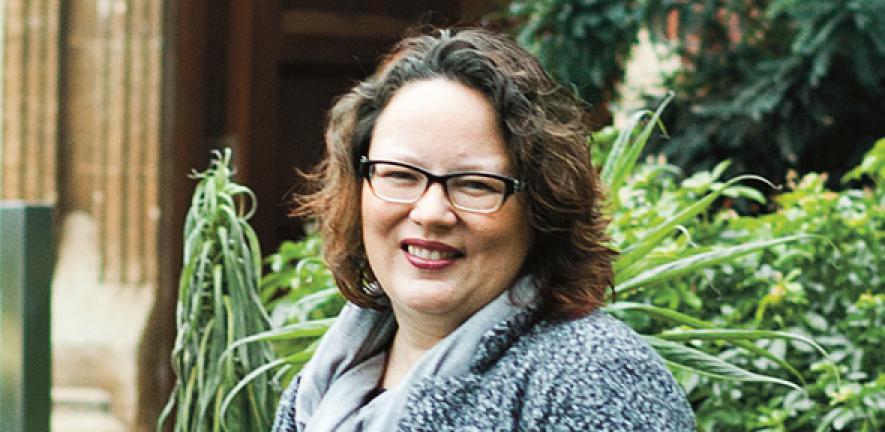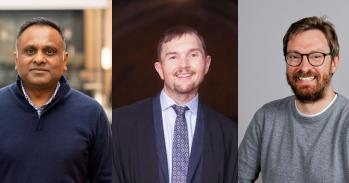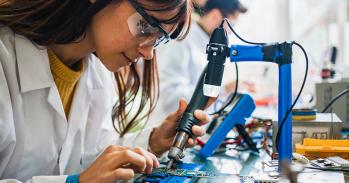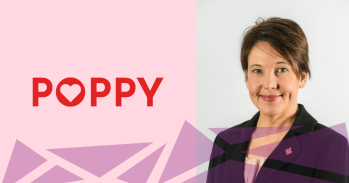
Homerton Fellow Dr Michelle Oyen explains why she has dedicated her working life to investigating why pregnancies go wrong.
Homerton Fellow Dr Michelle Oyen explains why she has dedicated her working life to investigating why pregnancies go wrong.
I spend very little time sitting in a room, typing on a computer. I get people together. I talk to engineers and medics, I get biologists talking to engineers. I’m the traffic cop in the middle
Dr Michelle Oyen
In 1999, Dr Michelle Oyen was a bioengineering student, working on a PhD project to measure the stiffness of bone, when the phone rang. It was Dr Steven Calvin, an obstetrician at the local hospital. “I’m trying to understand some issues around miscarriage and premature birth,” he said. “Is there someone there who has a machine that can stretch things, and make measurements of how strong something is?”
Calvin had a specific question: he was performing a procedure aimed at keeping a prematurely opening cervix closed by putting stitches around it. If a cervix opens too soon, it can result in premature birth. During the procedure, antiseptic is painted around the area, including the amniotic sac. He wanted to know if this substance changed the properties of the sac, making it more likely to rupture.
Oyen, now Reader in Bioengineering in Cambridge’s Mechanics and Materials Division and the Biomechanics research group, was fascinated by the idea of applying engineering thinking to this problem. “I was carrying out my experiments in a housekeeping cupboard in the hospital,” she remembers. “I had a rig for strength-testing the amniotic sac. I’d get a call from Dr Calvin that a woman in labour was happy for us to use the sample, I’d grab my rig and set it up in a cupboard down the hall from the delivery room.”
Their first investigation into this question resulted in a paper published in the Journal of Material Science: Materials in Medicine, and sparked what Oyen calls her life’s work: finding out why pregnancies go wrong. “Three per cent of the time, the amniotic sac breaks for no reason that we know,” she says. “That can cause miscarriage, or stillbirth if it’s before viability. Even after that, babies born between 25 and 30 weeks are very premature and so their outcomes are very poor. Even babies born after 30 weeks are still not fully ‘cooked’: you have to get to 37 weeks before we consider you to have made it to the end line. These problems happen in the developed world, even when we have so much technology around us. In the developing world, there’s a whole other set of issues. So when you talk about problems in pregnancy, you’re talking about a big chunk of humanity.”
There’s a long and honourable history of collaborations between engineering and medical science, from designing cutting-edge prosthetics to creating technology for robot-assisted surgery. Yet, says Oyen, looking at pregnancy in this way is an area that’s 20 or 30 years behind, say, orthopaedics. “Most of the time, pregnancy kind of works and doctors know how to manage something that goes wrong – but they don’t always understand why it’s happening. It’s something that we fundamentally don’t know about. And that really excites me.”
What makes pregnancy problems so ripe for exploration by engineers? The tools, says Oyen – namely, computers. “You can’t do experiments on pregnant women,” she points out. “It is completely unethical. But with computers, we can make a virtual model of the placenta. There’s potential for huge progress there.” One of her team’s recent projects, which gave rise to a paper published in the journal Placenta, is based around images of real placentas taken using a confocal microscope at a very high resolution. These images are then turned into 3D computational models. Oyen and her team can then model how the blood flows through the capillaries of the placenta, bringing oxygen from the mother to the baby. This will aid understanding of why the placenta sometimes malfunctions and fails to bring enough oxygen to the baby, meaning its growth is restricted.
That’s studying the placenta at full term: but its beginnings are also a rich area for research. When a fertilised egg implants into the uterus wall, specialised cells called trophoblasts must migrate in to help form the placenta, a biological process similar to how cancer cells metastasize. In collaboration with the Cambridge Centre for Trophoblast Research, which this year celebrates its tenth anniversary, Oyen’s team is studying how trophoblasts move, a unique cross-departmental group of pregnancy researchers. “The collaboration with others from the Centre has just been amazing,” says Oyen. “That’s the thing about Cambridge. You don’t find such a wealth of expertise anywhere else.”
Pregnancy problems are one of the Oyen Lab’s four main strands of research, the others being more traditional areas of bioengineering, including the creation of synthetic materials using inspiration from the natural world – studying materials such as eggshell and bone to find an equally strong and light material, for example. As any cook knows, Oyen says, an eggshell is actually pretty robust. If you want to break it, you need to hit it hard against your glass bowl. Yet it starts off as a squishy, watery membrane filled with yolk.
Given the right conditions – usually a chicken with average body temperature – it becomes a full egg with a hard shell in about 18 hours. This is a material that is 97per cent ceramic but forms naturally in close to ambient conditions, and therefore is not energy-intensive – unlike concrete, which always involves high temperatures to process. These materials could have medical applications, such as replacing the metal and plastic currently used for new hip and knee joints, or they could even be scaled up to create anything from furniture to buildings: the lab’s current project on eggshell-inspired materials is funded by the US Army Corps of Engineers.
“Materials inspired by bone and eggshell are really good structural materials: why limit them to medicine?” Oyen says. “We can make bone-like material now, but only in lab quantities. It would take a big company to scale it up. Natural materials are really interesting. We build things out of steel and concrete now, but before we started getting the idea to do that, we built things with whatever was around us – wood or stone. People don’t really appreciate what impact this could have on global warming: in 2007, the creation of steel and concrete was responsible for more CO2 emissions than the aviation industry worldwide. We demonise airlines without realising that building a skyscraper also makes a big contribution.”
Looking at the scope of her work, it’s hardly surprising that a glimpse at Oyen’s office bookshelf reveals a dizzying array of interests, from clouds to Russian dictionaries to Cary Grant – not to mention the electronic piano keyboard that stands next to it. “Yes, I have broad interests, which I think is normal for someone in such an interdisciplinary field,” she says. “A lot of my work is synthesising and bringing people together. Most of my students are co-supervised, most of my work is collaborative. I spend very little time sitting in a room, typing on a computer. I get people together. I talk to engineers and medics, I get biologists talking to engineers. I’m the traffic cop in the middle, translating from engineering language to biomedical language.”
Her chosen path is partly personal, she says – Oyen has juvenile arthritis, which began in her teens. Her father worked in an engineering company and had her solving problems from the start. “My motivation is completely selfish,” she says with a grin. “My first degree was in Materials Science and Engineering, and while I was doing that, I twigged that there were medically related engineering applications. I was doing very traditional metallurgy. I had nothing to do with medicine. But when I was having a particularly bad bout with my joints, I started getting interested. I started coming across some of the very traditional approaches to solving medical problems, like total joint replacement, which goes back to the 1950s. You replace living tissue, which is 75 per cent water, with metal and plastic. That’s a very 1950s solution and yet we haven’t come up with anything better.”
There is a word in bioengineering – bioinspiration – which, within the context of the discipline, means a method of solving engineering problems using natural approaches. A bioengineer will systematically study how nature has solved problems and then try to map that method on to a current problem. Perhaps it’s not too much of a stretch to say that a kind of bioinspiration is at the root of everything Oyen does: taking both nature’s design flaws and extraordinary abilities – to regrow, renew and create life – as a starting point for making things work better, from carrying a child to creating a city.
“There is so much potential in all our work, but in the pregnancy work, I feel like it’s really just getting started,” she says. “High risk, high reward – and the reward is better outcomes for mothers and babies. It’s what engineering is all about: problem-solving. It’s creative. After all, the root of the word engineer is not engine, but ingenuity.”
Dr Oyen is a Fellow at Homerton College.
Article by Lucy Jolin. This article first appeared in CAM - the Cambridge Alumni Magazine, edition 80. Find out more about Dr Oyen's work.




